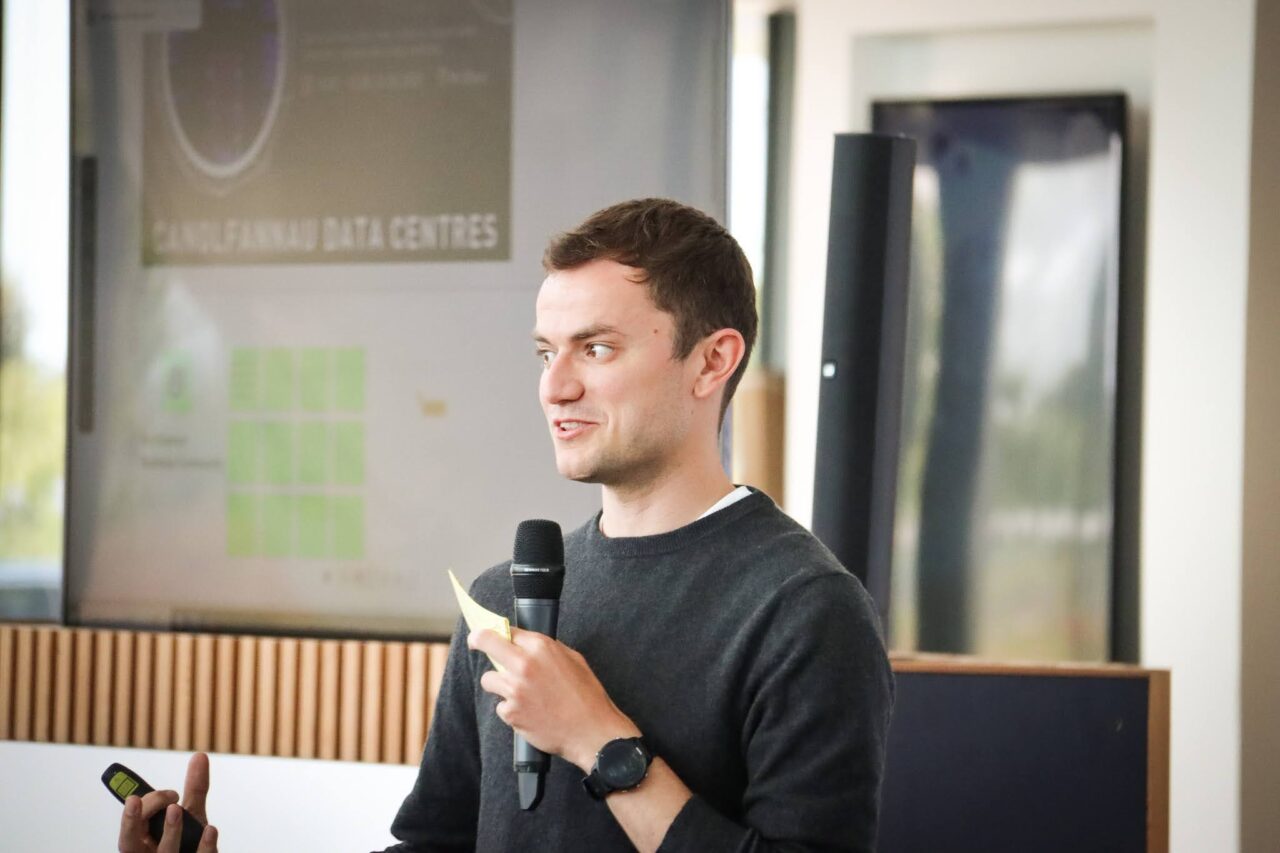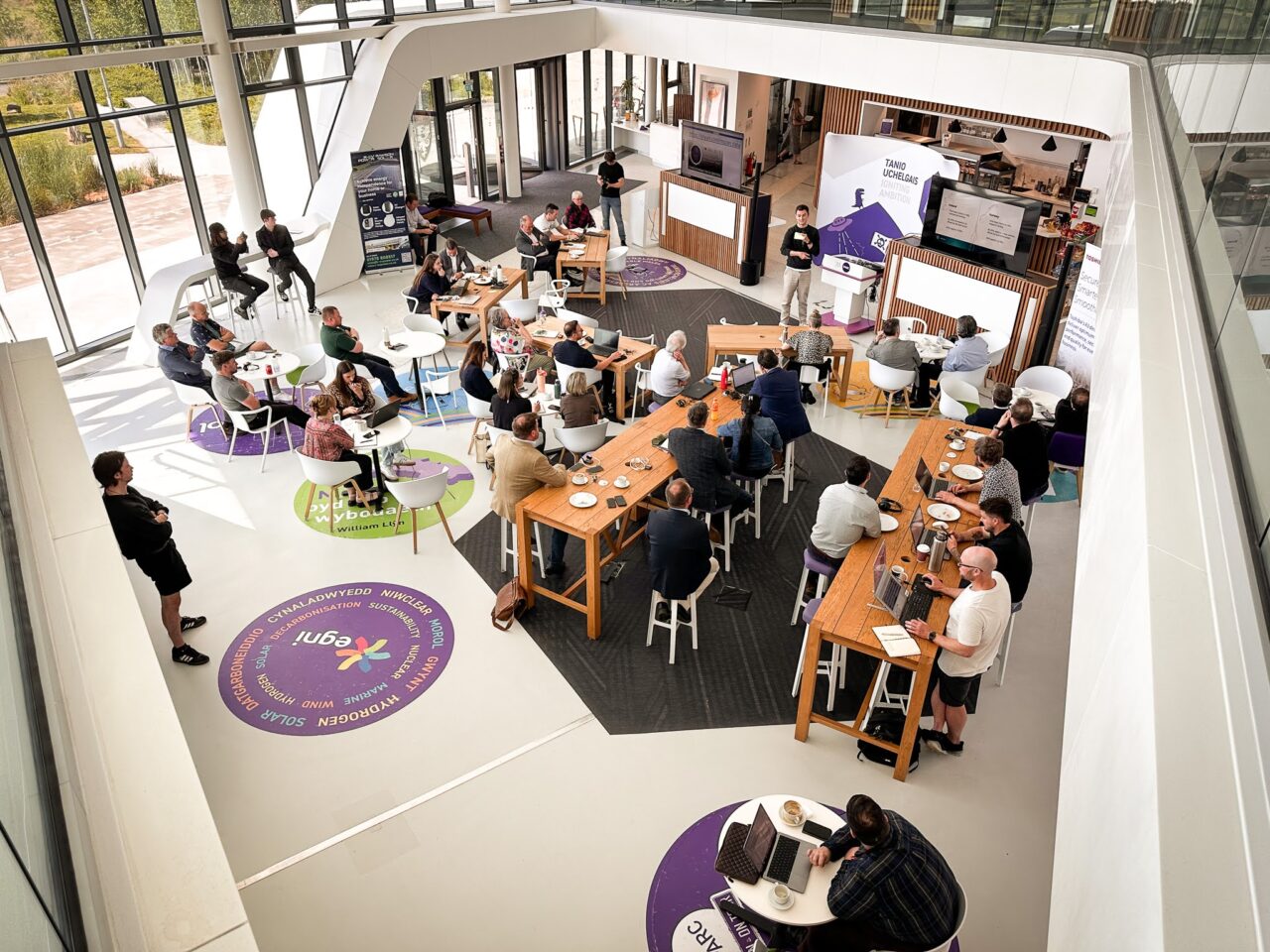In May 2025, M-SParc brought together leaders, innovators, and the community of Anglesey, located in Northern Wales, for Dyfodol Data, a conversation about the future of data centers in this region. Recently an article from Data Center Dynamics announced plans for a new data center in Anglesey. The project, set to create up to 2,000 jobs, proposes a major turning point for the region, with strong backing from local leaders focused on driving economic growth.
As data demand grows globally, so does the need for smarter infrastructure. The anchor of the discussion centered on one key question: What does collaboration look like when it comes to building data centers in Anglesey?
Helping steer the Dyfodol Data conversation was Northshore’s own Sustainability Consulting Engineer, James Rogers Jones, who spoke at the session with both professional insight and a strong personal connection to this region. Our commitment to local collaboration isn’t abstract, it’s personal. That’s why we’re proud to have team members like James not only lend technical expertise, but bring lived experience and community insight to the forefront. This kind of meaningful, community-first engagement is what sets our work apart. We caught up with James to hear more about the event and how it is closely aligned with his passion and background.

Q: James, what inspired you to speak at this event, and why was contributing to this conversation important to you?
“I was born and raised in Anglesey, so I have very close personal ties to the Island and still visit my family there regularly. Having worked in the industry for the better part of six years, I know firsthand how beneficial major developments like this can be for local economies, but only when they are done right and in close collaboration with communities. My personal connection to the island means that I want to do everything within my power to make this project a success for the local economies and Anglesey community.”
Q: How would you describe the energy in the room during Dyfodol Data? Were there any standout moments?
“On the day we had an incredible attendance, with leaders from the Welsh government, local council, energy providers, and businesses. I think the key moment that stood out to me was when the scale of the investment and opportunities was made clear. The project is worth £9 billion and offers over a thousand long-term jobs. Anglesey, and Wales more broadly, currently face a huge issue with many young people leaving to search for exciting, high paying jobs in other areas of the UK. A project like this could offer highly, well-paying jobs to the future generations on the island.”
Q: What stood out to you about Wales’ potential to lead in sustainable digital infrastructure? Were there any takeaways you found especially relevant?
“What stood out to me is that Wales has a real opportunity to lead in sustainable digital infrastructure. The country generates about twice the energy it consumes and has a proven track record in renewables, like offshore wind and tidal energy. Morlais, located near the proposed data center site, is the largest consented tidal project in the world and has plans to power the facility. That kind of local, green energy integration is rare and valuable.
However, the key takeaway was that while Wales has delivered some impressive individual projects, it lacks a joined-up national strategy for digital infrastructure. The current agile, case-by-case approach may work in the short term, but it makes it harder to scale solutions and ensure long-term benefits for communities. With more coordination, Wales could become a model for how to do sustainable digital development right.”

Q: Were there any comparisons made to how other countries in the region are approaching this challenge?
“Yes, in my talk, I looked at two different models Wales could learn from: Ireland and Norway. Ireland has taken a private sector-led approach, focused on attracting foreign investment and treating data centers as core economic infrastructure for the global tech industry. However, that rapid growth has come at a cost. Today, Ireland has 82 operational data centers, which consume 21 percent of its national electricity grid. New connections in Dublin are paused until 2028, and many recent projects have faced planning challenges.
Norway, by contrast, has followed a more strategic, sustainability-focused path. The government aligned digital infrastructure with its renewable energy goals, which has helped build strong public support and deliver community benefits such as waste heat reuse. Norway currently operates 31 data centers, consuming less than 1 percent of its grid.
The takeaway for Wales is that we should not simply copy either model. Instead, we have an opportunity to create a uniquely Welsh approach that combines community engagement, environmental responsibility, and inclusive economic development. It is about building smart, green infrastructure that creates long-term value both socially and economically.”
Q: How has this event influenced the way you approach your own work? Are there specific ideas you are taking back into your projects or strategy thinking?
“Through this event, I was reminded how powerful genuine community engagement can be. At the start, the room felt skeptical about the project, but by the end, people seemed supportive and energized. I think that shift happened because they felt heard and part of the process. It is an excellent reminder that taking time to listen can really shape how people connect with projects. I will be bringing that mindset into how I approach future projects.”
Q: What comes next for Wales and data center policy?
“We are compiling insights from the event into clear policy recommendations for the Welsh Government. The focus is on alignment, national, local, and community level planning and working together. Most importantly, we need urgent action. The digital sector is evolving rapidly. Wales must act now if it wants to help shape these developments to serve its communities and long term priorities.”
James’ passion for his home, his industry, and sustainability made it clear: the future of Wales’ data infrastructure does not just lie in wires and servers, but it lies in people, places, and purpose. At Northshore, we’re proud to stand alongside local governments and communities, on projects large and small, because we know that lasting impact is built locally, through trust, listening, and shared ambition.
